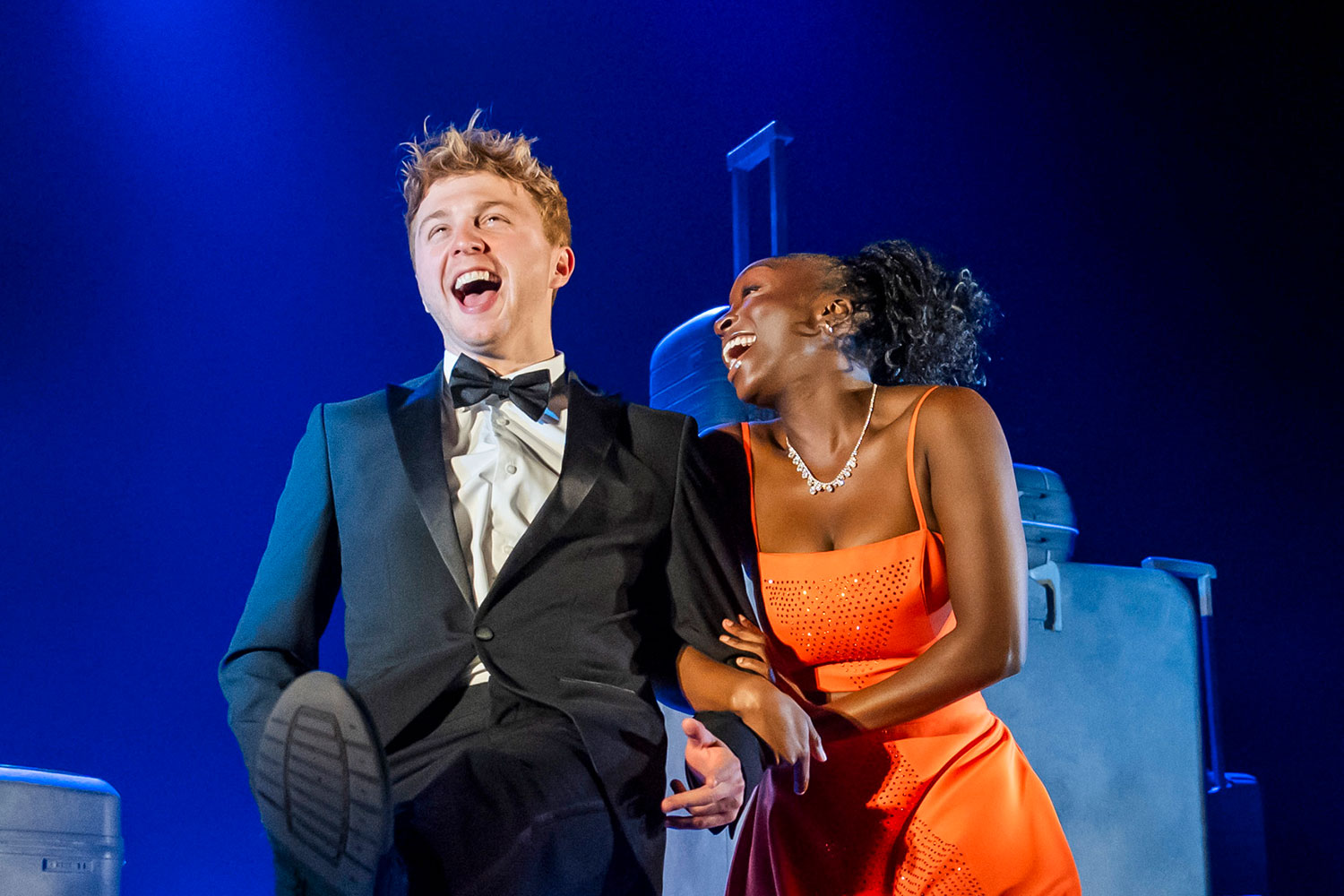The Blue Dragon
It is impossible to convey the full beauty of The Blue Dragon at the Barbican, Robert Lepage’s new work which he describes as a spin-off, rather than a sequel to, the glorious Dragon’s Trilogy of over thirty years ago: that play, as the director Nicholas Wright said, highlighted the problem of writing about modern plays that haven’t been “written” in a traditional sense.
So, The Blue Dragon creates its effects by stealth, in visual layering of images and ideas. Scenically, it is both very simple and very complex, using silhouette, back projections, dance, a Chinese calligraphic paintbox, and widescreen, cinematic techniques to tell the story of what happens to the Lepage character, Pierre Lamontagne, when he stays in China.
He’s pulled by different cultures, and his love for two women: Marie Michaud (who co-authored the piece with Lepage) as his former wife, Claire Forêt, who arrives in Shanghai to try and adopt a child; and Tai Wei Foo(who supplies choreography) as Xiao Ling, Pierre’s mistress, who is pregnant by him.
You could say that the quick jump cuts, executed with breath-taking fluidity, from bars, to Pierre’s attic, to an aeroplane (a sudden jolt of a reminder of the exquisite, nine-hour Lipsynch three years ago), to the streets busy with hubbub and bicycles, suggest the cinema more than the theatre.
But the point about Lepage’s theatre is the theatricality of the visual image, the skill and precision of the stage-management and physical presentation in a live arena: which is why the three actors are joined by an army of black-garbed backstage personnel at the curtain call.
The text is spoken in English, French and Mandarin, with sur-titles cunningly projected on the set. The Ex Machina production from Quebec – co-produced with an army of international collaborators, including the Barbican, and presented in association with Michael Morris’s Cultural Industry – is designed by Michel Gauthier, with amazing sound and lighting design by Jean-Sébastien Côté and Louis-Xavier Gagnon-Lebrun.
Nothing is too obviously stated in a Lepage show, but we have reflections here on the cultural interface of east and west, as Xiao Ling’s artistic impulses are overtaken by the economic necessity of reproducing a Van Gogh self-portrait on an assembly line. We first see her in a powdered cloud as a whirling Chinese dancer in full costume and make-up.
The end result, as in all Lepage’s best work, is a deeply satisfying sense of immersion, and of ideas and emotions explored and tested in a laboratory (too cold a word) of invention and quiet dignity. The alternative endings, three of them, are played with an almost insouciant inevitability, nothing cheap or forced about them at all. It’s a joy to behold, and very moving.










